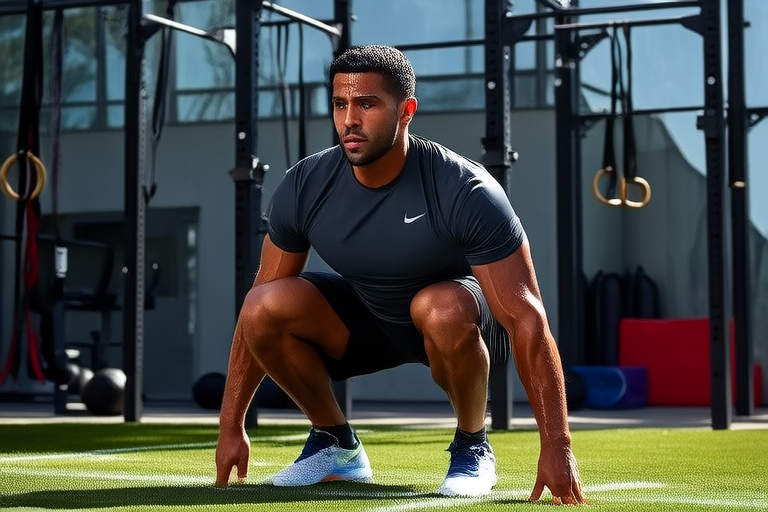The Role of Sports Science in Boosting Athletic Performance
1. Introduction to Sports Science
Sports science is an interdisciplinary field that combines principles from physiology, biomechanics, psychology, and nutrition to enhance athletic performance. At its core, sports science aims to understand how the human body responds to exercise and competition, providing athletes with insights into optimizing their training and recovery processes.
Key concepts in sports science include the understanding of energy systems, muscle mechanics, and the psychological aspects of competition. These concepts play a crucial role in enhancing physical capabilities by enabling athletes to push their limits safely and effectively. For instance, knowledge about anaerobic and aerobic energy systems helps athletes tailor their workouts to improve endurance or explosive power, depending on their sport’s demands.
Biomechanics focuses on the mechanical laws governing human movement, allowing coaches and athletes to refine techniques for greater efficiency and reduced injury risk. By analyzing movement patterns, sports scientists can suggest adjustments that lead to improved performance. Additionally, the psychological aspect of sports science addresses mental preparation, stress management, and motivation, all of which contribute significantly to an athlete’s overall success.
2. Nutrition for Athletes
Nutrition plays a pivotal role in optimizing athletic performance. Proper dietary intake ensures that athletes have sufficient energy reserves, maintain muscle mass, and support recovery after intense training sessions. A well-balanced diet rich in carbohydrates, proteins, fats, vitamins, and minerals forms the foundation of optimal nutrition for athletes.
Carbohydrates are the primary fuel source during high-intensity activities like sprinting or weightlifting. Athletes should aim to consume complex carbohydrates such as whole grains, fruits, and vegetables to sustain energy levels throughout the day. Protein intake is essential for muscle repair and growth; lean meats, fish, eggs, dairy products, and plant-based sources like beans and lentils provide ample protein.
Hydration is another critical factor in maintaining peak performance. Dehydration can lead to decreased endurance, impaired cognitive function, and increased risk of heat-related illnesses. Athletes should drink water regularly, especially before, during, and after exercise. Electrolyte replacement drinks may be necessary for prolonged or intense activities to replenish lost salts.
Supplements can complement a balanced diet but should not replace whole foods. Common supplements used by athletes include creatine for increased power output, beta-alanine for enhanced endurance, and omega-3 fatty acids for reducing inflammation. However, it’s important to consult healthcare professionals before starting any supplement regimen to ensure safety and efficacy.
3. Training Techniques
Evidence-based training techniques form the backbone of effective athletic preparation. To improve endurance, interval training has proven particularly beneficial. This method involves alternating short bursts of high-intensity effort with periods of rest or lower intensity activity. Interval training not only enhances cardiovascular fitness but also improves speed and power.
Strength training is crucial for building muscle mass and increasing bone density. Progressive overload, where gradually increasing resistance over time, stimulates muscle growth and adaptation. Compound exercises targeting multiple muscle groups simultaneously, such as squats, deadlifts, and bench presses, offer efficient ways to build strength.
Agility drills focus on quick changes of direction, acceleration, deceleration, and coordination. Ladder drills, cone drills, and shuttle runs are popular methods to develop these skills. Incorporating plyometric exercises like box jumps and depth jumps can further enhance explosive power and coordination.
It’s vital to approach training with caution to avoid overtraining syndrome, characterized by persistent fatigue, decreased performance, and increased susceptibility to illness. Periodization, dividing training into distinct phases with varying intensities and volumes, allows athletes to systematically progress while minimizing the risk of burnout.
4. Injury Prevention and Recovery
Injuries are common among athletes, often resulting from overuse, improper technique, or inadequate preparation. Understanding potential risks and implementing preventive measures can significantly reduce the likelihood of sustaining injuries. Common musculoskeletal injuries include sprains, strains, tendonitis, and stress fractures.
Proper warm-up routines prepare the body for physical activity by increasing heart rate, blood flow, and muscle temperature. Dynamic stretching, involving active movements that mimic sport-specific actions, is more effective than static stretching for preparing muscles and joints. Examples include leg swings, arm circles, and walking lunges.
Cool-down practices aid in recovery by promoting blood circulation, reducing muscle stiffness, and preventing lactic acid buildup. Static stretching after exercise helps elongate muscles and improve flexibility. Foam rolling and gentle massage can also assist in alleviating muscle tension.
Recovery strategies encompass various approaches to facilitate healing and restore readiness for subsequent training sessions. Adequate sleep, considered the cornerstone of recovery, allows the body to repair tissues and consolidate memory. Active recovery, engaging in light physical activity like walking or swimming, promotes circulation and reduces muscle soreness.
Compression garments and cryotherapy are additional tools used to enhance recovery. Compression clothing applies external pressure to muscles, potentially reducing swelling and promoting venous return. Cold therapy, through ice baths or cold packs, constricts blood vessels, decreasing inflammation and numbing pain.










